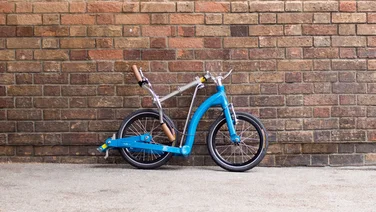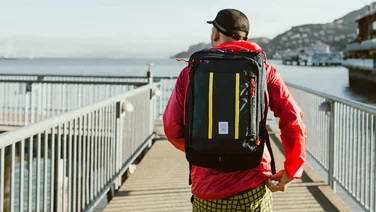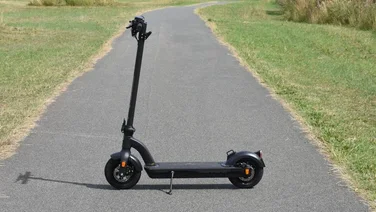To help us provide you with free impartial advice, we may earn a commission if you buy through links on our site. Learn more

Like all Olympus DSLRs, the S-620 uses the Four-Thirds lens system. These cameras have sensors that are a little smaller than the APS-C sensors in other consumer DSLRs. This can have a negative impact on image quality, and means the viewfinder is smaller too, but it also allows the camera and lens to be more compact. We’re not sure how significant this benefit is – a few millimetres shaved off here and there isn’t very noticeable. The E-620 is light for an SLR but not spectacularly so, although its fibreglass-reinforced plastic body feels tougher than most. This is one of the pricier models in Olympus’s consumer DSLR line-up, so it’s fair to expect some impressive features. Image stabilisation is built into the camera body, so it will work with any lens. The articulated screen pivots at the side to allow self-portraits as well as shooting from above and below eye level. This is great for making the most of the live view mode. Even though the screen’s 2.7in size and 230,000-dot resolution isn’t the largest, we found the articulated design very useful. The live view image shows white balance and exposure settings, while a 10x digital magnification helps to achieve sharp manual focus. Video recording and HDMI are disappointingly absent, though. The E-620 has more physical controls than Olympus’s cheaper DSLRs, with dedicated buttons for AF point, white balance, ISO speed, metering and focus mode settings. Buttons are backlit, which is useful in dim or dramatic lighting conditions. The backlight is subtle enough not to be a distraction in normal use. We rarely pay much attention to digital photo effects built into cameras, as it’s nearly always better to apply these on a PC. However, Olympus’s Art Filters are better than most. Soft Focus, Grainy Film and Pin Hole are particularly pleasing. Other unusual features include bracketing not just for exposure and white balance but also for flash power and ISO speed. The E-620’s continuous mode is meant to run at 4fps but managed only 3.3fps in our test, slowing to the speed of the CompactFlash card after just seven shots. Even so, that’s reasonably competitive for the price. The camera took a while to switch on and shoot, though, at around 1.5 seconds, and autofocus was slow and unreliable in low light. Image quality in bright light was generally excellent, but while details were sharp, subtle textures weren’t as precise as from competing cameras. The Auto ISO mode had a lower limit of 200, which produced some evidence of noise in the shadows, even in brightly lit shots. The E-620 failed to compete at high ISO settings, producing more noise and less detail than entry-level SLRs from other manufacturers.
Disappointing low-light performance and the small viewfinder count against it, but the E-620’s articulated screen, capable live view and multitude of unusual features and controls leave it with an average overall rating.





